– Today we are pleased to introduce Michael Edmonds as part of the Wisconsin Historical Museum’s History Sandwiched In lecture series. Michael Edmonds is the Director of Programs and Outreach at the Wisconsin Historical Society and the author of two award-winning books from the Wisconsin Historical Society Press,Out of the Northwoods: The Many Lives of Paul Bunyan, and Risking Everything: A Freedom Summer Reader. Between 2006 and 2015, Edmonds wrote more than 500 “Odd Wisconsin” sketches for a syndicated weekly newspaper column, and he co-wrote Warriors, Saints, and Scoundrels: Brief Portraits of Real People Who Shaped Wisconsin. He has also written articles for the Wisconsin Magazine of History and other journals. He’s here today to discuss his new book, Taking Flight. So please join me in welcoming Michael Edmonds. (audience applauding) – Thank you, Katie. Thank you, yeah, it’s a new book but it’s an old project. A few minutes ago, Elsa Althen, who was the biology librarian at the university for many years, came up and said hello. And I could remember going to her library decades ago working on this book.
So it’s a new book, but it’s an old project. How many of you are birders? Anybody feed birds? Go out and watch birds? Okay, good, a critical mass of you. Good. Then I hope you’ll enjoy today’s talk. The book is published by the Wisconsin Historical Society Press. They’re the oldest publisher in the state. The book is about how humans have thought about and acted toward birds over the last 12,000 years in the Midwest. And by the Midwest, or the heart of the continent, I mean mostly what you see in pink or lavender there, plus the Great Lakes. It encompasses the watersheds of the Missouri and the Mississippi and the Ohio Rivers for the most part. And south about as far as St.
Louis or Memphis. And it’s actually kind of heart-shaped on the map. By humans I meant, when I was researching, not just ornithologists, not just scientists, but immigrant farmers, working class people, American Indians; ’cause how else can you go back 12,000 years? So the perspective was broad geographically and broad demographically. It all began 35 years ago. I began birding more than 30 years ago when my wife was pregnant for the first time. Anxious about my upcoming responsibilities, I did what many new fathers do, I ran for the hills. (audience laughing) Or, more accurately, for the swamps, where I distracted myself from impending fatherhood by trying to identify momentary bursts of color in Roger Tory Peterson’s Field Guide to the Birds. Mary and I had traveled that summer to a cabin poised on the edge of a northern lake. I was unpacking the car when a great blue heron floated silently past, almost close enough to touch. I’d never seen anything like it.
When it landed on a small island just across from the cabin and stared back at me, I was hooked. And I began spending as much time as I could outdoors with my eyes on the sky. Birds are all around us. They paddle along our shores, they flee from our footsteps, perch on our fences, and soar above our homes. We see birds every time we step outside. And we usually see what we expect to see. A wood duck perched on a low branch by a pond is a check mark for a birder, data to a biologist, a potential trophy for a hunter, and a source of wonder to a child. As an old Hindu proverb puts it: “When a pickpocket encounters a saint, “all he notices are pockets. ” When we look at birds, we see what we look for and so did our ancestors. Well soon after I took up birding, I began to wonder what earlier observers saw when they encountered the same birds that I was seeing.
Since my day job was at the nation’s largest American history library, I started to comb through old scientific reports, the diaries of travelers, interviews with former slaves, letters of settlers, logs of renaissance ship captains, autobiographies of Indian elders, and anyone writing by anyone else who might have commented on the same birds I was seeing. I compiled bibliographies, I generated indexes, I photocopied quotations. Some people like to play golf; I like to do library research. As the years rolled by, in my spare time I sifted through more than 1,200 primary sources, looking for eyewitness accounts of American birds. And I gradually became less fascinated by the birds and more by the people who looked at them. What did birds mean to the people here long ago, became the theme of the book. The first stumbling block I encountered had to do with names. If you watch birds or feed birds, you’ve got a field guide like this on your windowsill or in your car. And you use it to identify specific objects out in front of you. Our world view, our attitude toward nature, almost universally is I’m in here behind my eyeballs, nature is out there full of discrete objects that obey the laws of physics and whatever.
They all have names, and there’s a distance between us. But that’s not how everyone always saw nature. That comes from how we talk about nature, which begins with how we name nature. 20 years ago, I was standing in line outside Chicago’s Field Museum waiting for the doors to open and watching a flock of Canada geese nibbling in the flooded grass. A few feet behind me a mother tried to keep her impatient children entertained. “Look at the ducks,” she cajoled, pointing with an outstretched arm. “Look at those big ducks. ” (audience laughing) As every new birder discovers, mastering the name for birds is the key to understanding everything else. You can’t navigate a field guide, find information on the web, or talk to other birders unless you speak the language. Until you understand the jargon, you’re like that exasperated mom.
You can see the birds, but you literally don’t know what you’re talking about. You can’t understand football if you don’t know the difference between a quarterback and a cornerback. And you can’t understand birds if you can’t tell a goose from a duck. But mastering bird names isn’t easy. As a new birder, I was stumped by my first field guide. The book seemed to be arbitrarily arranged. It didn’t show birds alphabetically or by color, size, habitat, geography, or any other feature that I could figure out. Instead, the birds were grouped under headings with incomprehensible Latin labels. Inside those sections, every species had not one but two more Latin names, usually based on some obscure detail that could only be seen on a dead museum specimen. The English names weren’t much better.
Most of them seemed to be holdovers from medieval Europe, combined with the name of some long-dead white guy, like Bewick’s wren. (audience laughing) And then there were all the weird names I couldn’t figure out at all. What the heck was a phalarope? Well, maybe you remember encountering names like that for the first time, and when these scientific names were first introduced, people also had trouble with them. Take, for example, the ruddy duck, a pretty little bird found all over Wisconsin. Ornithologists decided to call it Oxyura jamaicensis and classified it in the genus of stiff-tailed ducks. But by the time they did that, people around the Midwest already called it blue bill, booby coot, dip-tailed diver, sleepyhead, water partridge, hard-headed broadbill, spoon-billed butterball, and horse turd dipper, not to mention 150 other colloquial names. When the country’s leading bird journal switched to using Latin names in the 1880s– This is the first edition of the nomenclature that still is used today in field guides. When the country’s leading bird journal switched to using these names, readers complained that it was, quote, hard to spell, hard to pronounce, hard to remember, and harder still to understand. One exasperated Milwaukee subscriber complained to the editor, “Why don’t you have it all in Latin? It would mean just as much to us. ” (audience laughing) In 1918, when indiscriminate bird hunting became illegal, it fell to a US Forest Service biologist named Waldo Lee McAtee to educate hunters about the new law.
But he couldn’t educate them unless he called the birds by the same things they called the birds. He discovered when he researched colloquial bird namings that not only did they have their own names for birds but that a number of these were pornographic or scatological. McAtee, in the words of a friend, was the most honest man I’ve ever known, and he had no patience with gentile circumlocutions. He wrote, “There is no excuse, save politeness, “for calling the sound accompanying “the dive of a nighthawk a boom “since it is perfectly imitated by a voluminous “and lusty dry fart playing across “a throbbing margin of anal membrane. “(audience laughing) For this reason, German farmers called the nighthawk fatzvogel or luft-fatzel, fart bird or air farter. (audience laughing) Names like this couldn’t be published in his government report, though, so McAtee turned to printing them privately in his rare pamphlets. He’s one of the colorful people whose story is told in the book. Every community, it turned out, had its own names for the birds with which it shared the land. And these reveal how they perceived and what they thought about birds. This was driven home to me one morning when my five-year-old and I were playing with our dogs.
When we stopped because it was time to get dressed for school, she asked, “Dad, do the dogs know what time it is?” I stopped in my tracks. Of course the dogs didn’t know what time it was. Time isn’t something that can be sniffed. Without understanding numbers and the patterns that govern them, the dogs could never know what time it was. I realized that I usually considered time to be part of nature, outside of myself, like air or gravity. When, in fact, it’s actually just a concept in my mind. The dogs obviously couldn’t know distance or direction. A foot, a meter, north, south, above, below, left, right, these too don’t exist in the nature world. They’re just ideas inside my head. Every culture distinguishes them differently.
And I realized if such fundamental aspects of reality as time and space were socially constructed, then what about all the bird names I’d worked so hard to master? They weren’t really about birds at all, but about the way that birders and scientists talk about birds. Other people talked about birds quite differently. The book discusses the bird naming practices of American Indians, European explorers, immigrant farmers, and market hunters in chapter eight, which is called Ahonques, Timber-doodles, and quicks. Anybody heard the term quick? It’s a name for herons, generally, because when they take off in flight they empty their bowels. So we call them by Latin names, or great blue heron or whatever, but that’s not what people before us called them. Now, as I said before, we have an essentially scientific worldview. But, this is a modern invention. Until about a century ago, the early 20th century, most people did not have a scientific worldview. Science was considered something that a niche market, an urban elite understood. And it might be useful if you were at a university, but if you were a farmer in Dane County, science was not that useful to you.
And people interacted with the birds around them much more through a network, a filter that was based on folklore and superstition. The image on the left there of pulling the Thanksgiving turkey wishbone apart is a remnant of that that I assume you’re all familiar with. But there were many other folk beliefs that were almost universally shared. Many pioneer settlers believed that if a whippoorwill landed on your roof, death or bad luck was sure to follow. An owl hooting on the roof or at the window could be equally fatal. Kansas farmers told each other, quote, “Notice when you hear the first mourning dove of spring. If you’re walking or standing, you will be well. If sitting, you’ll be sick. If lying down, you will die. ” (audience laughing) People thought swallows hibernated all winter in the mud beneath frozen ponds like frogs.
Immigrant farmers roasted vultures to smear the dripping fat on achy joints. In Midwestern black communities, animus beliefs carried from Africa persisted into the 20th century. Here, for example, is what a voodoo expert told one investigator in the 1940s as a formula for killing an enemy. That, of course, is, in the image on the right there, Marie Laveau, a voodoo queen of St. Louis, of New Orleans in the 19th century. So the recipe for killing an enemy was: take a rooster, chop off his head and feets and take them to a graveyard. You can keep the body to cook. When you get to the graveyard, put a black candle in the rooster’s beak, lay it down in front of a tomb, and bury the feet in the ground at the back of the tomb. Light your candle and pray for one hour that the man has bad luck. Then dig up the feets and take them and the head and go bury them in the man’s yard.
He won’t last a week. (audience laughing) So folklore like this governed many more actions and ruled many more minds than the scientific assumptions we have today before the 20th century. It could only be found, I could only discover it because at the turn of the 20th century a whole crew of anthropologists spread out around the country to collect such folklore, customs, stories, jokes, anecdotes, games, right before mass media arrived on the scene. Today, radio, television, and the web mean that you can go anywhere in North America and people talk pretty much the same way about the same things. And the folklore about birds that is in the chapter called Feathers, Fetishes, and Fables was captured just before that happened. Well, the shift to science such as we know was only possible because in the first half of the 19th century, scientists spread out all over the continent to collect information. This map shows scientists who came across the Midwest and generated lots of the information that we have today about birds. The fellow at the upper left you may recognize as Audubon for whom the Audubon Society is named. The others beneath him, Alexander Wilson and Thomas Say and Thomas Nuttall over here, are not so well-known. But if they had not left– mostly from Philadelphia– and traveled by foot and canoe and horseback tens of thousands of miles, we wouldn’t know what we know about the birds of the Midwest, and you wouldn’t talk about or think about them the way that you do.
I’ll just read briefly about the fellow at the lower right here, Nuttall, because he’s one of the more eccentric ones. Actually, all of these explorers were fairly eccentric, and you’ll enjoy their stories. In 1810, the American Philosophical Society hired Nuttall to travel to St. Louis and then up the Missouri through Kansas, Nebraska, and the Dakotas to the mouth of the Yellowstone in pursuit of specimens. It was an activity, quote, “To which he appears singularly devoted,” another member of the expedition wrote, “and which seems to engross every thought “to the total disregard of his own personal safety “and sometimes to the inconvenience “of the party he accompanies. “To the ignorant Canadian boatmen “who are unable to appreciate the science, “he’s just a subject of merriment. “Le fou, the fool, is the name “by which he is commonly known. ” And he was parodied by James Fenimore Cooper in one of his novels as an absentminded professor, and it’s the first appearance in American culture of the motif of the absentminded professor, which we all know today. Now, although the scientist could not be appreciated by working class people like the voyagers who were paddling Nuttall around, a veteran sailor explained to his puzzled comrades how science worked on another expedition that Nuttall was on. “I’ve seen them colleges “and know the ropes,” the old sailor began.
“They keep all such things,” specimens, “for curiosities and study ’em “and have men a purpose to go and get them. “This old chap knows what he’s about. “He ain’t the child you take him for. “He’ll carry all these things to the college. “And if they are better than any that they have had before, “he’ll be head of the college. “Then, by and by, somebody else will go after some more, “and if they beat him, he’ll have to go again “or else give up his birth. That’s the way they do it. ” Which, you know, is not too far off, right? (audience laughing) Well, it’s because of scientists, early ornithologists like these, that we have the view we have today. Prior to the early 19th century, people writing about birds in our part of the country were generally missionaries and explorers and soldiers. The missionaries are by far the most interesting because they were caught in a dilemma.
The painting on the left there is a 20th century painting of what Father Marquette might have looked like. No one knows what he looked like. But they did indeed travel in very rough circumstances like that. One of the most important, for our purposes, missionaries was a fellow named Nicolas, Louis Nicolas, who came to Ashland to the Chequamegon Bay area in the 1660s just before Father Marquette came out here. And Nicolas was a bad missionary. It’s not recorded that he ever converted anyone. He wanted to travel with the Indians and travel with the fur traders and sketch wildlife. He aimed to produce the first comprehensive book about North American plants and animals, and he worked on it for 30 years and died without it ever being published. He was very cantankerous. The Indians got mad at him.
His Jesuit superiors got mad at him and threw him out. But he was dedicated to the pursuit of science in a funny way. He was caught in the middle in that he wanted to use this new empirical method of the 1660s. The Royal Society is founded and the French Academy is founded, and the idea is you have to look with your own eyes to figure things out, to discover the truth about the world. And Nicolas tried to do that. But, at the same time– And he made these marvelous drawings, many of which are reproduced in the book, too. But, at the same time, he had to subscribe to Catholic dogma. He couldn’t say that the Indians’ way of living was good. He had to convert them. And he couldn’t embrace empiricism too energetically because he still had to admit that there were mermaids and there were unicorns ’cause everybody around him believed that.
So that’s the catch. The Jesuits had a telescope at their center in Quebec and they could predict eclipses, which astonished their Indian hosts. But, at the same time, they believed that the world was primarily supernatural. It was a contest between good and evil. Here’s a Jesuit priest, a description by an eyewitness of a Jesuit priest in the 1660s trying to keep blackbirds from raiding a farmer’s field. They entered the field and walked through the wheat in procession. A young lad going before the Jesuit with a basin of holy water. Then the Jesuit, with his brush, dipping it into the basin and sprinkling the field on each side of him. Next to him, a little bell tingling and about 30 men following in order, singing with the Jesuit, Ora pro Nobis; at the end of the field, they wheeled to the left and returned. And thus they went through the whole field of wheat, the birds rising before them and lighting after them.
An English Protestant watching this ceremony said, “At their return, I told the French lad “the friar hath done no service. “He’d better take a gun and shoot the birds. ” The lad left a while, asked the Jesuit what to say, and when he returned, reported the sins of the people were so great that the friar couldn’t prevail against those creatures. (audience laughing) So the missionaries who came here had this terrible dilemma. They were caught in the jaws of this dilemma as science began to be born. Of course, they were all hosted by Native American families and communities. And without that support, they couldn’t have done the work that they did. They encountered a very different way of looking at nature in which, in this part of the country, birds were central. Birds were central to Indian life, whether it be their economic life or whether it be their spiritual life. How was I supposed to find out about the beliefs of Native Americans who left no written records? Folklore was hard enough to get at working class people who didn’t write books.
Well, it turns out that in the last 30 years a staggering amount of archeology has been done in the Midwest. Any archaeologists here? I know we have archeologists talking here a lot. No? But during our lifetimes, archeology has changed dramatically and unearthed tens of thousands of sources of information. And the conclusion reached, the consensus reached, is that early Native Americans here believed in what scholars called shamanism. It’s a belief that’s found around the globe, summarized this way by a modern shaman, Maria Sabina. And she said, “There is a world beyond ours, “a world that is far away, nearby, and invisible. “There is where God lives, where the dead live, “the spirits and the saints. “A world where everything has already happened “and everything is known. “That world talks. “It has a language of its own.
“I report what it says. ” To people like her, what we can know through our senses and our reason is just a small part of reality. The universe actually, to them, consists of an upper world, part of it visible as the sky and stars, a middle world which we can experience through our senses, and a lower world which can be entered through caves or underwater. In this three-tiered universe, time unfolds cyclically like Earth’s seasons. Everything comes into existence, grows and develops, decays and dies, and then is reborn and renewed. Everything is complete and the entire cosmos is sacred. To connect with those other realms, shamans worldwide enter mystical states through hypnotic drumming, ecstatic dancing, prayer, and hallucinogenic plants. Their followers believe that they take the form of other creatures in order to move through the upper and lower worlds. For at least 12,000 years, birds have been among shamans’ most important tools. Birds, or human-bird shapeshifters called falcon warriors, like the picture on the lower right, are depicted on clay tablets, copper plates, engraved shells, ceramic pots, carved pipes, painted cave walls, earthen effigy mounds, and woven baskets.
Feathers, bird skulls, even entire bird carcasses have been found interred with shamans or attached to ritual objects, like pipes and headdresses. What we’re looking at up there on the screen is a pipe carved out in the shape of a raptor, dating from about 100 BC. This is about a 10-inch tall claw, talon, shaped out of mica, a kind of stone that is thin and glass-like. This is copper, about an eight-inch across copper bird, which would have been burnished to be very, very bright and worn on a headdress. Again, thousands of years ago. This is, on the upper right, is a thunderbird incised on a stone wall. I assume you’re all familiar with the effigy mound culture of this part of North America. These mounds are not found elsewhere. It’s the Upper Mississippi. It’s one of our unique contributions to American history.
And about a third of effigy mounds depicted birds and creatures from the upper regions. The shell and the drawing to the right of it, you can just, I assume, make out on the shell this very same image, is a falcon warrior from about 1,000 AD showing how birds might have been used. So for thousands of years, birds were religious objects. They were also economically important. Warriors carried medicine bundles containing bird skins. They wore feathers to channel the powers of eagles. And they prayed hard to bird mentors for help. Teenagers encountered bird guides on their vision quests. An oral narrative about a shapeshifting falcon warrior named Red Horn, which is still told aloud by the Ho-Chunk today, was painted centuries ago on cave walls in Wisconsin and Missouri. Hundreds of enormous bird effigies were sculpted into the landscape.
The feathers of colorful songbirds and the wings of cranes were used in ceremonies in Wisconsin 12,000 years ago. To indigenous peoples, birds possessed obvious transcendental power. Hawks and eagles soared so high that they disappeared from sight into the upper world, while loons and ducks vanished underwater to travel to the lower one. To someone who sees the entire universe as a sacred whole, birds were conspicuous messengers between humans and the other realms. The first three chapters ofTaking Flight discuss Native American interactions and beliefs about birds from 12,000 years ago up until traditional beliefs that are still embraced today. It also, those chapters also discuss how birds were hunted, cooked, eaten, and turned into clothing or household goods by Native peoples. So for 12,000 years, humans and birds interacted and got along, until the middle of the 19th century. And that’s when there was an enormous shift in the relations between humans and birds. Two inventions were the catalysts for this shift. The first was the shotgun, which you see on the left.
If you think of pioneer settlers coming to Wisconsin territory, you know, walking over the hill outside this building in 1837, they carried what were essentially muskets. Flintlock guns. There was a rifle, you had to cram gunpowder down it and you had to cram a bullet down it, and then you had to hope that when you pulled the trigger a piece of flint would scrape across rough metal, send a spark into the gunpowder and shoot the bullet out. You got one shot and it didn’t work half the time. So if you wanted to hunt birds, you couldn’t really be very successful. But then, in the mid-19th century, shotguns were invented, and they shot not one bullet but a cloud of pellets three or four feet in diameter. And they shot it consistently hundreds of yards. And so for the first time it was possible for hunters to capture large numbers of birds, and a profession actually sprung up, market gunner, to hunt birds to be sold in marketplaces. And that was possible because of the second invention, the railroad. The map on the right shows the Midwest, the eastern half of the country, just crisscrossed with railroads.
And what this meant was that, in 1870 or 1880, hunters from Chicago could go to Horicon Marsh for a weekend and hunt, or market hunters on prairie potholes in Iowa or Minnesota could capture hundreds of birds, kill hundreds of birds and ship them to Chicago, or even New York, to be eaten in restaurants and cooked in kitchens. The result of those two changes was that in the years on the screen there market gunners killed hundreds of millions of birds in a single generation. The research done at the turn of the 20th century suggests that half of all species fell in total numbers by half their populations. And, of course, some species were wiped out altogether, the passenger pigeon being the best known. On top of these two influences, habitats that had supported wild birds for thousands of years were transformed into endless miles of wheat and corn. Populations of most bird species were cut in half. Several were wiped out altogether. Then, through a careful, cultivated marketing campaign, what today we would call marketing, conservationists were able to outlaw indiscriminate hunting, protect habitats, and replace shotguns with binoculars in most Americans’ homes. This happened between 1880 and 1910. The big impetus for this was the Audubon Society, which was founded in Massachusetts and was well-connected to decision-makers in Washington.
And they produced a lot of magazine articles, books like the middle picture on the left there for kids, Our Feathered Friends, and they were able to get legislation passed so that hunters had to have licenses and that, ultimately, in 1918, a treaty with Canada was ratified that made it illegal to hunt most kinds of birds. And in that shift, during the progressive era, during the time our Capitol across the street was being built, Americans idea of what was normal in how we relate to birds went from the top photo to the bottom photo. And we’re the heirs of that today. We tend to think of birds either sentimentally or scientifically or some combination of the two. And these kids in the big photograph at Necedah Wildlife Refuge are probably having those ideas passed through their heads as they search for cranes. They don’t understand, they don’t know the history in the small photos at the top of that slide that for thousands of years, people have been looking at birds and understanding them differently. I’d like to end by reading an excerpt from the conclusion of the book, which reiterates its main point. At my favorite birding spot on the edge of town. Who knows what that picture is? – [audience member] Cherokee Marsh? – Cherokee Marsh it is, yes. A dirt road winds through the woods to a scrubby point jutting into the Yahara River.
As I reach the end of it and sweep the water with my binoculars, I stand next to a conical burial mound made by Hopewell people 2,000 years ago. This little peninsula was special to them too. Across the bay, a 200-foot panther effigy has been keeping silent watch for more than a thousand years. A mile down river, where the Yahara empties into Lake Mendota, a flock of bird effigies overlooks the shoreline. Generations of hardwoods have grown old, tumbled to the ground, and melted back into the soft earth while these sacred bird mounds tried to balance heaven and hell. Over the hill behind me, a Yankee farmer tried to drain the wetland a hundred years ago. His perpendicular ditches were no match for the gentle curves of the marsh as it meandered among alder, sumac, and cattails. Today blue-winged teal and mallards nest where he dreamed of harvesting corn. After him, university students came here to study biology, and their professors lobbied to preserve the marsh. Since it was too wet, too buggy, and too far from downtown to have financial value, city officials agreed.
The same birds have returned here each spring for thousands of years. Great blue herons still step gingerly through the shallows as they always have, and sand hill cranes still stop for the night on their way north. But what the humans here noticed and thought about birds and what they did to them has continually changed. So the marsh that was once a holy place for shamanic ceremonies became a hunting ground, a family farm, a biology lab, and a refuge. At each point in time, people’s ideas prompted specific actions to reshape the land. Humans have been reshaping the Midwest for at least 12,000 years. But in just the last two centuries we’ve unintentionally brought the entire planet to the brink of disaster by altering its climate. To save ourselves from scorching droughts, violent storms, and the political and military calamities they’ll produce, we need to change how we think. The Buddha taught that actions follow ideas, quote, as surely as the wheel follows the footsteps of the ox. Changing the planet begins by changing our minds.
Each of us needs to imagine how we might nurture the world as well as exploit it. How to tread as carefully in our own lives as a great blue heron does in the shallows. This starts by replacing our narcissism, fear, and greed, with empathy, humility, and respect and then by altering our daily habits to express those new values. If enough of us can do this, maybe our children’s children will also feel inspired by the ancient thunderbirds guarding the mouth of the Yahara and sand hill cranes will still stock the meadows beside them. And that’s where the book ends. (audience applauding) Thank you.
Search University Place Episodes
Related Stories from PBS Wisconsin's Blog

Donate to sign up. Activate and sign in to Passport. It's that easy to help PBS Wisconsin serve your community through media that educates, inspires, and entertains.
Make your membership gift today
Only for new users: Activate Passport using your code or email address
Already a member?
Look up my account
Need some help? Go to FAQ or visit PBS Passport Help
Need help accessing PBS Wisconsin anywhere?

Online Access | Platform & Device Access | Cable or Satellite Access | Over-The-Air Access
Visit Access Guide
Need help accessing PBS Wisconsin anywhere?

Visit Our
Live TV Access Guide
Online AccessPlatform & Device Access
Cable or Satellite Access
Over-The-Air Access
Visit Access Guide
 Passport
Passport


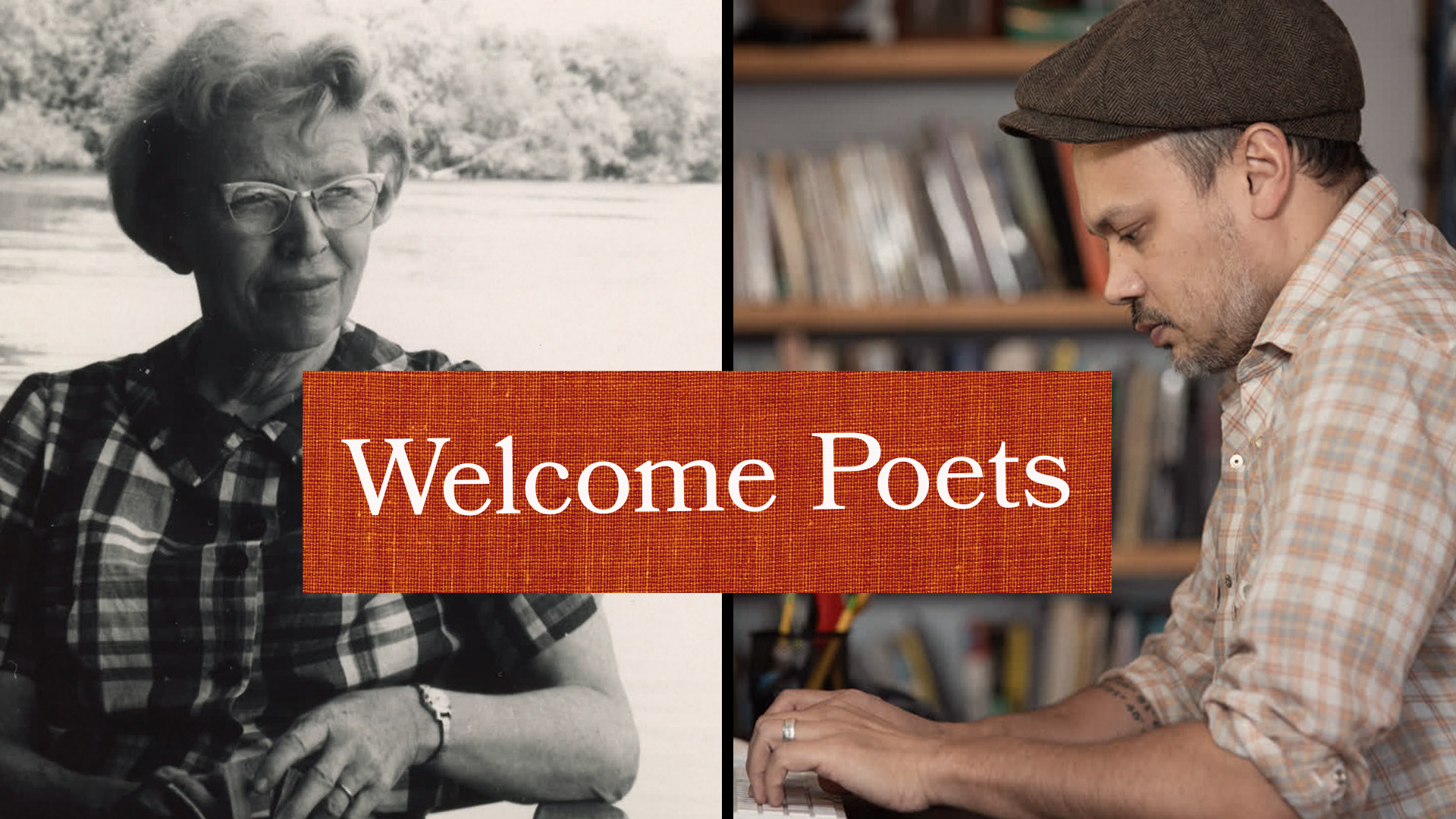



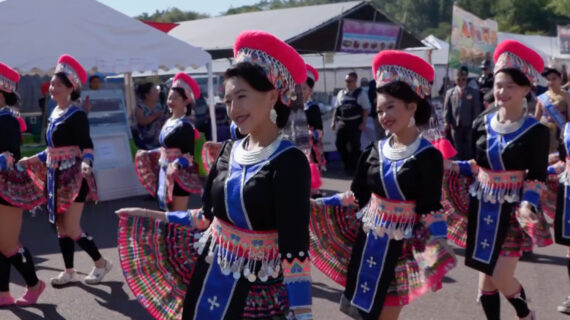
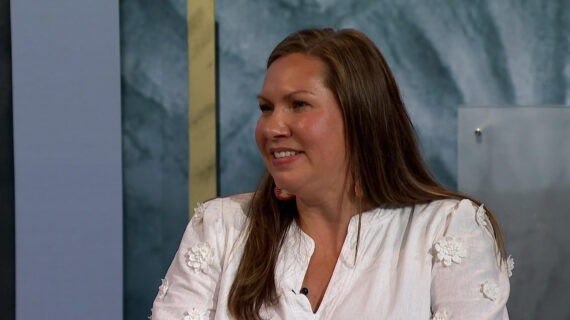
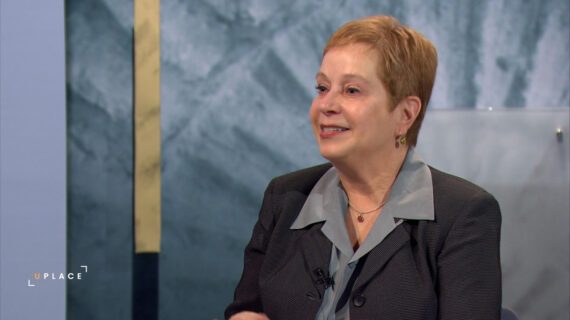
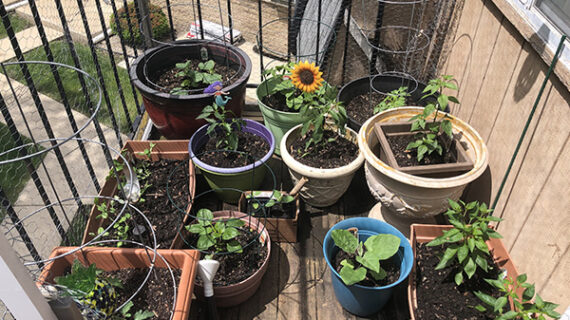
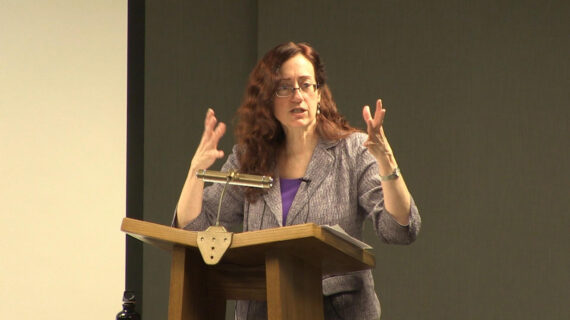
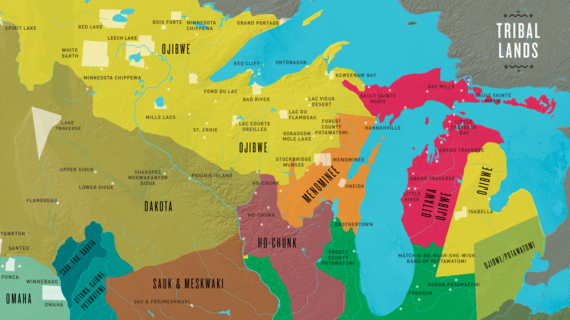
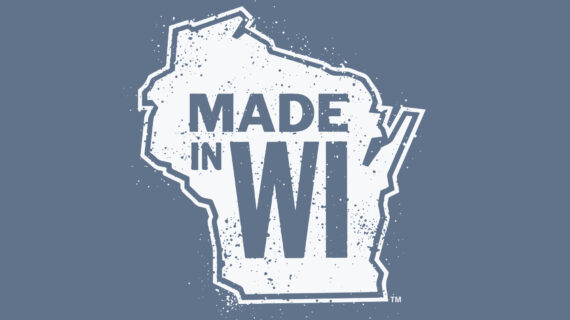

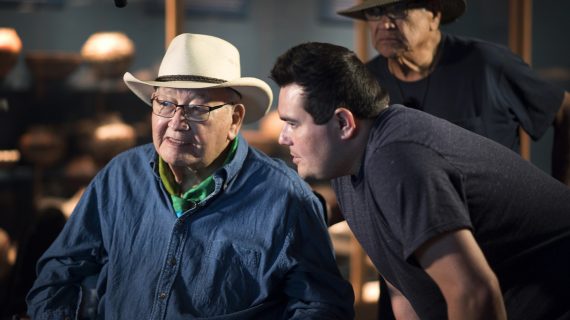

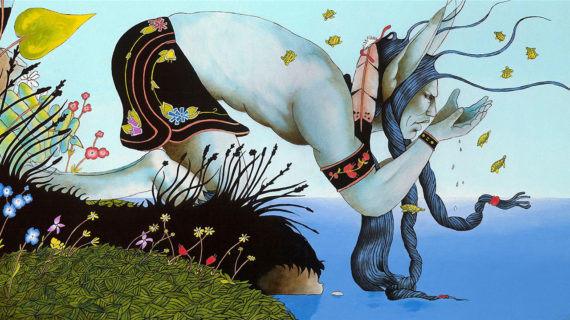

Follow Us